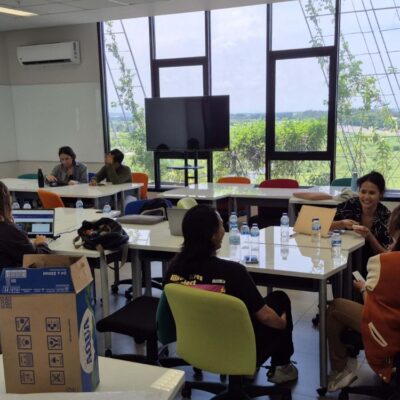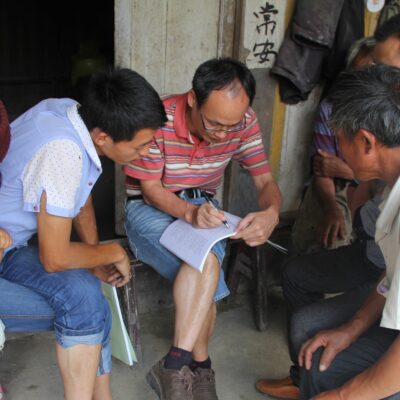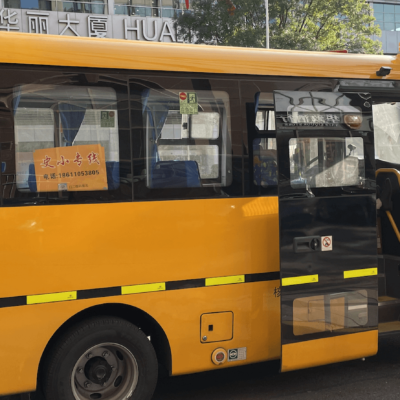For a couple of decades, Australians have been hearing about the rise of Asia and how Australia could be best prepared to engage with Asian powers. It’s clear now that Asia has ‘risen’—economically, culturally and politically.
A major new report has been released by the Asian Studies Association of Australia which assesses how well-prepared Australia is for an Asia that has now ‘risen’.
The report is called ‘Australia’s Asia Education Imperative: Trends in the Study of Asia and Pathways for the Future’. One of the lead authors is Professor Melissa Crouch at the University of New South Wales. She spoke with Melbourne Asia Review’s managing editor Cathy Harper.
The concept of ‘Asia rising’ has probably become familiar to Australians. Your report talks, though, about Asia having ‘risen’ i.e. it’s no longer a future projection but current reality. Can you elaborate on that?
In the 1990s-2000s there was lots of enthusiasm about ‘Asia rising’, but we’re now 20 years into the 21st century (hailed the Asian century) and it’s a chance to take stock of how far Asia has risen. Geo-politically, a number of countries in the region are increasingly becoming major players. There are a growing number of middle income countries, as well as future projections of strong economic growth for many countries. The trade and economic statistics show that two-thirds of Australia’s two-way trade is with Asia, and seven of Australia’s top 10 trading partners are in the region. Australia’s economic prosperity going forward is very closely linked to Asia. And then, of course, there’s the cultural dimension: think of the success of K-Pop [Korean pop songs] and the way in which that has gone viral around the world.
In relation to education specifically in the last decade or two we’ve seen countries in the region really increase in profile in terms of international education. For example, according to international rankings of universities, such as The Times Higher Education World University Ranking, between 2016 and 2022 China increased the number of universities that it has in the top 200 in the world from just two universities to nine. Hong Kong increased from three to five universities and South Korea from four to six. Malaysia is becoming increasingly attractive in terms of education exports, as well as Indonesia which has invested significantly in domestic public funding for research and is now heavily encouraging its academics to publish internationally in English. So, in a range of ways, you see the higher education space in the region changing rapidly.
How would you describe Australia’s current positioning on Asia literacy and the changes that are going on in the region?
At the moment, the federal government doesn’t have a policy and there is no strategy. There is no coordination across federal and state levels, across government and university sectors, across primary schools and high schools and universities in terms of Asia literacy. That’s where a really big gap lies and it’s in contrast to the past. If we look back several decades, we did have a federal policy on Asia literacy. There were enormous efforts to coordinate and put in place structures that make it easier for students to take up a language and to advance their language skills. At the same time, the current government in Australia, which is obviously relatively new in office, has already made indications that it sees Asia as central in a range of ways including economically, but that it also recognises the gap that exists on Asia literacy and that they plan to do something in that space. What that looks like we wait to see.
Why is it that Australia doesn’t have a coordinated policy, especially when Asia is so important?
If we look back over the past two decades, particularly the past decade, one of the challenges that has arisen is the narrowing of focus in our engagement with Asia, primarily seeing Australia’s engagement as economic and particularly security related. The obvious example here is China, but there are certainly others. I think the challenge when we view the region in those terms is that we almost have blinders on, and we don’t see what else is going on. We also reduce the effectiveness or the integrity of Australia’s engagement in the security space. Looking at our engagement with Asia holistically in ways that both prioritise people-to-people connections, as well as the economic and security connections, is really important and has been lacking for some time in Australia.
In terms of higher education in Australia, there have certainly been a lot of changes over the past two decades. There are several strands to those changes and one of them is the bureaucratisation of universities. Very often, we have high levels of leadership in universities who lack knowledge and prior engagement with Asia. So often there is that tension between academics at a university who see the need for deep engagement with Asia and have a desire to promote it, yet their efforts need the support of the university leadership. Also, the kinds of incentives that the government offers, in many ways, drive how universities function in Australia. For example, if the government says ‘we’re all about commercialisation of research and so we’re going to give you, universities, money for commercialisation’ then that’s where universities will go, but it’s very hard to commercialise things such as language skills. There’s also been a range of other challenges in the higher education sector. Obviously, COVID-19 has been an enormous period of upheaval and uncertainty for the universities and has placed certain financial pressures on them. Unfortunately, programs that have smaller class sizes and require more time in class are likely to be cut and so Asian Studies and many other kinds of degrees, particularly the social sciences, are often the ones more vulnerable in those kinds of situations.
The report has found that overall, the study of Asia remains a relatively marginal pursuit in most Australian universities and appears to have gone backwards in at least some of them. Enrolments in some Asian languages, such as Indonesian and other Southeast Asian languages, are low. Do you think Asian studies is in crisis in Australia and why?
If we take the issue of language-learning specifically I think it’s pretty clear that there are some serious challenges and certainly some languages, although not all of them, are in crisis. One of the challenges is that because of the lack of a federal policy, there is no funding and support for Asian language study at the primary and secondary school level. In the past universities have counted on a pipeline coming from secondary schools where students have taken up a language, Indonesian is a common one, and then students choose to take it at more advanced levels at university. Unfortunately, what happens if you cut primary and high school programs or you get a significant reduction in the numbers of students enrolled at those levels, then the pipeline shrinks for the university level.
There are some successes. Because of the increasing number of international students, one of the areas where we do see enrolments is in East Asian languages: Japanese, Korean, Mandarin. One of the challenges is that there are perhaps less students who were born in Australia now studying Asian languages, even though we have more international students studying languages.
Obviously, our international students and our alumni are an absolute asset and we should definitely be incorporating them into the way we think about Australia’s engagement with Asia. But there is enormous value and integrity in having Australians, whether they are Asian Australian or otherwise, commit to a period of time where they seriously learn a language and use that as a platform to engage in the region and allow that to open up for them a range of opportunities.
In the report you make an interesting distinction between traditional area studies such as Asian Studies which develops deep country-specific knowledge and a post-area studies approach. Has Asian Studies has lost touch with the needs and the wants of students and employers who seem to want a more general and transnational approach?
I should acknowledge I’m not actually in an Asian Studies faculty or program (my co-author Edward Aspinall is). We want to have it both ways: we absolutely value the more traditional Asian Studies approach, which has often been to have a Faculty or Department or School or program that is specifically dedicated to Asian Studies. The benefit of that is incredible depth, whether it’s Japanese studies or Korean Studies or Indonesian Studies.
On the other hand, we have to look at the reality of the higher education sector in Australia—most undergraduate students do a dual degree such as Arts/Business or Arts/Law or Arts/Science. One of the benefits of this post-area studies model is that other disciplines potentially offer Asia-related subjects to students. For example, business schools and law schools offer courses to students around business in Japan or contract law in China. I think there can be enormous synergy if the student is taking Chinese and then studying Chinese business law. The challenge is that obviously faculties like business or law do not promote language programs. There’s also the difficulty that academics are reliant again on leadership in a faculty to have an appreciation for Asia to get their support to run the course on Asia. If you have really strong enrolments that’s fine, but enrolments go up and down in most courses, so you need to have the support of your head of school or your faculty to keep those courses going. There are about 11 Asian Studies programs in Australia, I believe. But obviously if we looked at a post-area studies approach the possibilities are endless in terms of mainstreaming the study of Asia more broadly.
Why is it that students are choosing more international, transnational, subjects, rather than deep country-specific knowledge?
I’d perhaps phrase the problem in a different way. Depending on the faculty or field of study, students are often required to study Australia or Australia’s place in the world rather than the region. In some senses, it does vary depending on discipline, for example, in law students have to study a large number of Australian law subjects to qualify to practice law, and students have to do these subjects before they can even get to their electives that might be on Asia. But globalisation and internationalisation are a reality and have been for a very long time. Asia is part of that story and so I think we can sell Asian Studies as part of that broader story because looking at how India has adjusted to the forces of globalisation is just as relevant and useful an example as looking at how Australia has adjusted.
Do you think the key problem is not so much about debate regarding the merits of area studies as opposed to post-area studies, but is really a crisis around funding?
The key challenge in Australia is that universities respond to incentives that government offers—incentives primarily being in the form of funding or the different ways they structure fees and degrees and so forth. When there is an absence of funding in a particular area it can be really hard for academics to justify to their faculty and school why certain programs should keep running.
Take the recent free trade agreement between Australia and Indonesia, for example. One would think universities would look at that and go ‘wow, there’s going to be a huge number of jobs in the future for Australians who know Indonesia, both culturally and linguistically. Let’s embed in our programs a wealth of knowledge around Indonesia so that students are employable in the future’. But if there is no government funding there, then there’s little incentive. Obviously there have been some incentives—the primary one being the federal government’s New Colombo Plan. That has really transformed students’ short term mobility to Asia in a really fantastic way and there are many really positive stories about that. One of the challenges with it, though, is that it is short-term. On the one hand my students go to Indonesia and they love it and they think ‘I wish I knew some Indonesian. Maybe when I go back to my university I’m going to pick it up as part of my degree’ but then they get back and realise their university doesn’t offer Indonesian and it gets too hard or it’s too late in their degree and basically the opportunity is lost. The structures are needed back in Australia to enable students to develop long-term engagement with the region.
The report makes several recommendations including developing a federal strategy on Asia literacy and renewed federal support for Asian languages; and also that universities should enhance Asia-related research and links with Asian universities. Can you summarise the key elements that you’d like to see implemented?
The federal strategy is a really key one and while as a federal strategy it would be led by the government it would need to bring together the diverse range of stakeholders on the issue of Asia literacy. This includes not only universities but potentially secondary schools and primary schools, language institutes and state governments. It’s not too hard to envision that we should have something like we had in the 1990s and early 2000s, which was a national Asian languages and Asian program for schools. There are models, we’ve done it before. There were studies that suggested the former policies did help to increase the number of student enrolments and increase the number of programs that were offered, so we have models there we can work with. A key part of that model is Asian languages because through language students have a much greater appreciation for the region, which leads to other things. Again, we have examples from the past as to how we’ve done that, and it wouldn’t be too hard to re-think some of those models for the contemporary era. A question we need to ask ourselves is ‘how much should students learn the language in-country and how much do we need to provide it here in Australia?’ I’ve mentioned the New Colombo Plan and as far as we know that will continue, but one of the programs that was cut in recent decades was support for higher degree students’ research in Asia. The New Columbo Plan funding is only for undergraduates, so often its only funding beginner level language skills. The benefit you have when thinking about funding PhD research is that these are students who are committed to three years or more of studying a particular area, they’ve got the enthusiasm, they just need some funding to do six months field research in Japan, or wherever it might be. Again, we had those programs in the past, but they’re gone now. We have a real opportunity to reinvigorate something in the higher degree space so we can produce experts and specialist in the field who have that in-depth knowledge.
Across the university sector we see universities plan in a range of ways and what we want to see is universities planning to be global leaders in Asia literacy. Again, this would be beneficial both for the government and for universities. It would require universities to look to their academics who have Asian Studies expertise as to how to develop that. There are number of universities in Australia that have decided to shape their international portfolio in a way that puts academics who have expertise in positions of leadership to help lead the engagement that they develop, whether it’s in Malaysia or Indonesia or China, and that’s a really smart way of doing things.
Academic freedom is particularly important to the times in which we live and to universities both in Australia and in the region. Often we think about it as a problem in Asia with the persistence of authoritarianism. We know that many of our colleagues and collaborators in the region face very real challenges and yet we’ve also seen many such challenges arise in Australia as well. What we need from universities is a renewed commitment to academic freedom so that their academics feel supported to undertake research in the region and are supported in ways that help them navigate some of the challenging times in which we find ourselves.
Could that partly be behind the lack of federal government strategy and funding of Asian Studies— that it could potentially create political problems from analysing and perhaps criticising authoritarian governments?
When we did our research for this report one of the clear messages that came through is that people are very concerned about the way in which Asia is primarily been talked about in security terms. One of the ways that has manifested in the higher education sector is the law that requires academics to disclose any sort of engagement with Asia. At its worst, you don’t want to get to a situation where such policies are preventing academics from engaging in collaborative research and collaborating on grants and publications, and other sorts of things.
Separately, there are others who have done studies that have shown a significant increase in co-authorship and grants with collaborators in the region. One of the challenges with the previous government’s assumption that there are security issues lurking behind every corner is that it potentially disincentivises collaboration in the region.
What kind of response do you realistically expect from this current government, noting that there does seem to be a change in tone towards the region. Do you expect that to translate into a significant turnaround in the current situation facing Asian Studies and Asian languages?
I think there are reasons to be positive on two fronts, both on the University sector and on the government side. On government, I think there is reason to be hopeful. Realistically it will take some time. There have been indications on some changes to the New Colombo Plan but nevertheless a renewed commitment to it which I think is great. In addition, there have been potential indications around Asia literacy support, but at this stage it’s unclear what that will look like. I think we also know that the government has made a statement around Vietnam as one of its particular areas of interest, so there might be something on that in the short-term.
On the University sector, the reality is, as we are emerging from COVID but still living with it, universities are very keen to recoup revenue and they are very keen to attract international students. But I hope that COVID has made university leadership more aware of the risks of being over dependent on one particular market and on international student income more broadly. Given the economic growth possibilities in Southeast Asia there is, among some universities although not all, an awareness that there are huge opportunities that may help them rebalance the risks when it comes to thinking about international students and overseas campuses.
The report notes that major changes have taken place at Australian universities such as new campuses in the region, joint degrees and an increase in international students and these require more academic expertise on Asia. How significant do you think that is in terms of the future of Asian Studies?
Some of the trends we were seeing pre-COVID were really remarkable. I say that as someone who was out of Australia for a few years and then came back and noticed the wave of international students and engagement in the region. Now that we are through the lockdowns of COVID there will likely be a reinvigoration of initiatives like joint degree programs. In terms of joint degrees, it is happening on a fairly small scale, but I think that could really change in the future depending on students’ preferences. What are the preferences of students from the region and how do we adapt to those? I think it’s a changing space, but certainly some of the trends that we saw pre-COVID will now gain pace again. As that happens, we need more academics with knowledge of the region at our universities because we have a responsibility to our international students, and they are in many ways supporting many of the things that universities do. One of the things we suggest is that international student revenue should be re-invested in Asian studies. Universities have come to be comfortable with large amounts of revenue from international students and for that to be relatively discretionary in the way in which they use it. I think we could take a much more strategic approach and think about how we can position Australian universities to be ongoing leaders in the field of the study of Asia and engagement with Asia.
I’m not sure that universities are very good at responding to employers demands. We do know that there is demand from employers for Asia literacy skills. We’ve seen a number of institutes connected to the business sector come out with reports suggesting that the business community wants graduates with Asia literacy skills and anecdotally we’ve even had connections with government departments such as DFAT who have said that they’re not getting the number of applications that they need in their graduate programs of applicants who have Indonesian skills or other language skills from the region. So even government graduate programs are noticing they are not getting the numbers or the kind of graduates that they want in terms of Asia literacy skills. I think it needs government to make some fairly big signals to universities that Asia literacy is a skill set employers want.
Image: 2019 New Colombo Plan Alumni Ambassador Orientation: Canberra. Copyright: Asialink.




